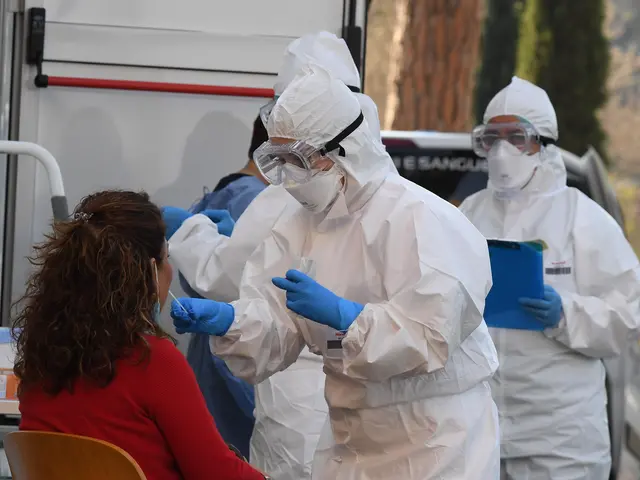Pooling patient samples for COVID-19 testing helped Stanford researchers track the early spread of the coronavirus in the Bay Area.
The prevalence of the virus that causes COVID-19 was tracked during the early days of the pandemic by pooling samples from people with upper respiratory symptoms in a study conducted by researchers at the Stanford School of Medicine and published Monday as a research letter in JAMA.
"Our study suggests that we were not experiencing significant circulation of the virus ... prior to the third week in February," said Benjamin Pinsky, the medical director of Stanford's Clinical Virology Laboratory and the senior author of the study.
Pinsky and his colleagues tested samples of 2,888 people who sought care at Stanford Health Care between Jan. 1 and Feb. 26 for respiratory symptoms. They combined the samples in groups of nine or 10, then tested the pooled samples for the presence of SARS-CoV-2, the virus that causes COVID-19. Of the 292 groups of pooled samples, only two were positive. Further analysis showed that two people, one in each positive group, were infected with the coronavirus.
"I was a little surprised the prevalence was so low, but it was consistent with what our public health officials in California were observing through normal surveillance methods," Pinsky said, "our positives came about the same time that they were identifying an uptick in COVID-19 diagnoses."
Estimating the prevalence of a virus within a community prior to widespread disease transmission may help public health officials predict when to prepare for an increase in cases, or to identify when a virus begins to spread to new geographic regions, the researchers said.
"This sort of screening strategy is probably not necessary at this point in the pandemic," Pinsky said. "But this technique is likely to be valuable at the beginning of a future outbreak to inform public health and track the spread of a virus across the world over time."
The Stanford Clinical Virology Laboratory was one of the first academic medical labs in the country to develop and administer a diagnostic test for the COVID-19 virus. Since starting to use the test in early March, more than 12,000 have been conducted on samples collected from people with symptoms of COVID-19 or with known exposure to someone with the disease. Of these, about 9 percent have tested positive, according to the study.
 简体中文
简体中文




